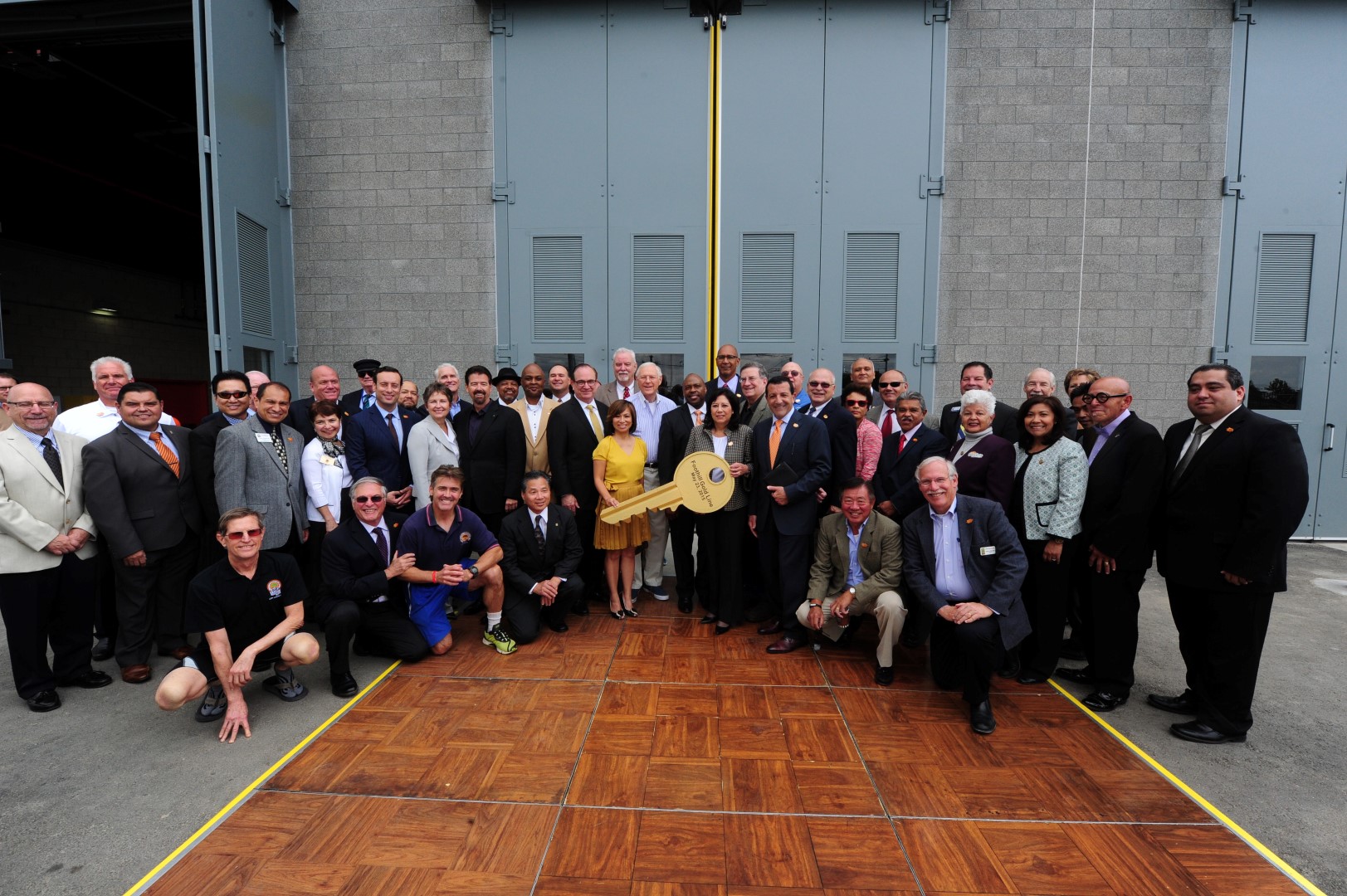The following article appeared in Passenger Transport on May 29, 2015.
Foothill Gold Line Dedicates Operations Campus – Passenger Transport

Dignitaries celebrate the opening of the Foothill Gold Line Operations Campus. Standing around the large key are, from left, Duarte Mayor Tzeitel Paras-Caracci; Michael D. Antonovich, Los Angeles Metro Board member and Los Angeles County supervisor; Metro CEO Phillip Washington; Hilda Solis, Metro Board member and L.A. County supervisor; and Habib F. Balian, CEO, Foothill Gold Line Construction Authority.
The Foothill Gold Line Construction Authority held a community open house and dedication ceremony May 23—months ahead of schedule—for its state-of-the-art Foothill Gold Line Operations Campus in Monrovia, CA.
The opening of the 24-acre, $265 million light rail maintenance and operations facility precedes the planned late September launch of the 11.5-mile Foothill Gold Line light rail project, with six stations between Pasadena and Azusa. The ceremony included the symbolic presentation of a key by authority Chief Executive Officer Habib F. Balian to Los Angeles Metro Chief Executive Officer Phillip Washington, whose agency will operate the new line.
“The partnership between the construction authority and Metro over the last few years has been incredible,” said Foothill Gold Line Board Chairman Doug Tessitor. “We built the facility for Metro and we wanted this to be a model for future facilities in their system. I believe we have achieved that goal with the artistic look, integration of sustainability and the overall functionality of the site.”
The construction authority designed and built the 132,000-square-foot Main Shop Building to meet the U.S. Green Building Council’s Leadership in Energy and Environmental Design (LEED) Gold Standard. The facility, which will service up to 84 light rail vehicles and house 200 employees over several shifts each day, is projected to use 35 percent less water and 32.5 percent less electricity than a typical building of its kind.
